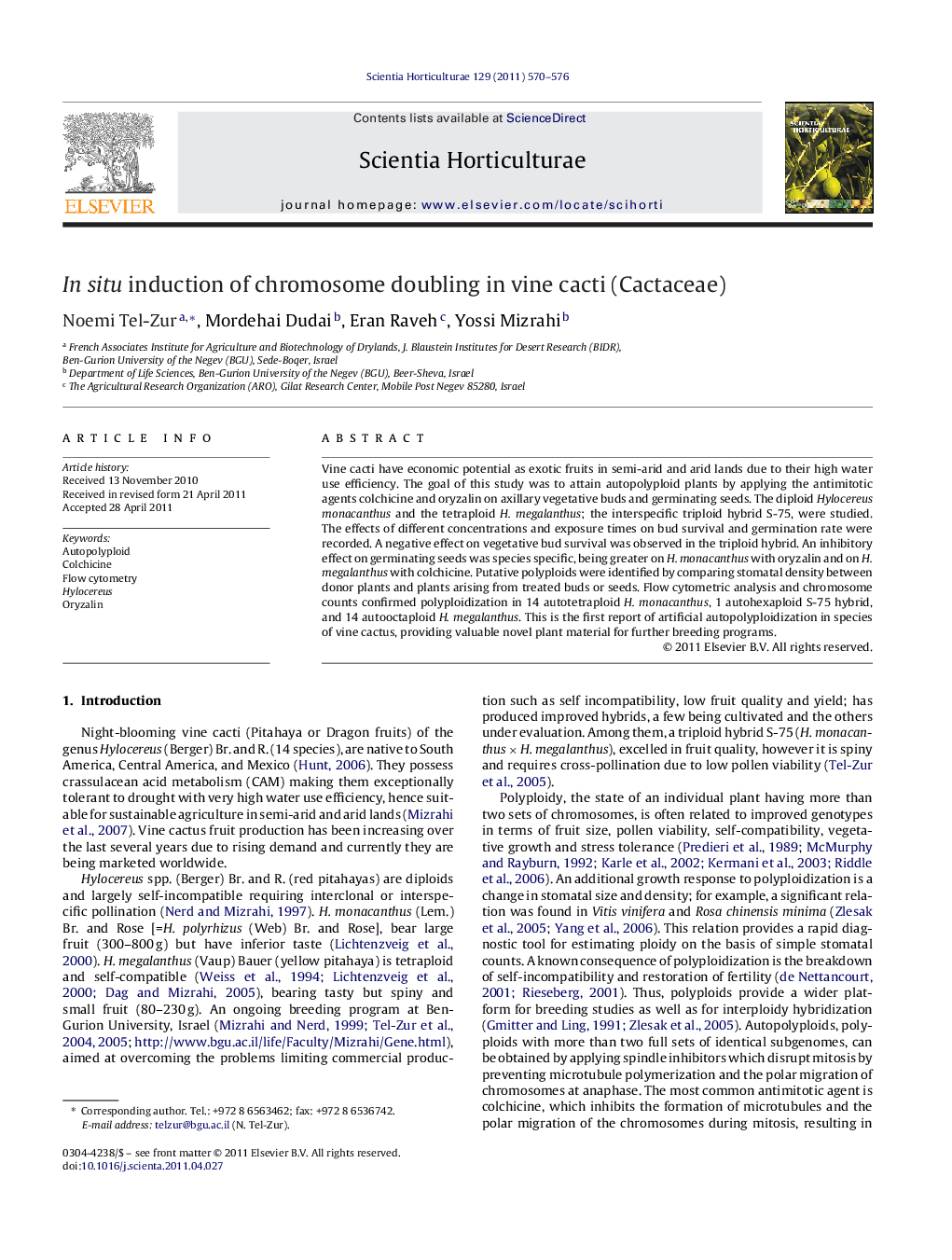| Article ID | Journal | Published Year | Pages | File Type |
|---|---|---|---|---|
| 4567994 | Scientia Horticulturae | 2011 | 7 Pages |
Vine cacti have economic potential as exotic fruits in semi-arid and arid lands due to their high water use efficiency. The goal of this study was to attain autopolyploid plants by applying the antimitotic agents colchicine and oryzalin on axillary vegetative buds and germinating seeds. The diploid Hylocereus monacanthus and the tetraploid H. megalanthus; the interspecific triploid hybrid S-75, were studied. The effects of different concentrations and exposure times on bud survival and germination rate were recorded. A negative effect on vegetative bud survival was observed in the triploid hybrid. An inhibitory effect on germinating seeds was species specific, being greater on H. monacanthus with oryzalin and on H. megalanthus with colchicine. Putative polyploids were identified by comparing stomatal density between donor plants and plants arising from treated buds or seeds. Flow cytometric analysis and chromosome counts confirmed polyploidization in 14 autotetraploid H. monacanthus, 1 autohexaploid S-75 hybrid, and 14 autooctaploid H. megalanthus. This is the first report of artificial autopolyploidization in species of vine cactus, providing valuable novel plant material for further breeding programs.
► The aim of this study was to obtain autopolyploid vine cacti. ► Antimitotic agents were applied on axillary vegetative buds and germinating seeds. ► Autopolyploids were obtained in two vine cactus species and one interspecific hybrid. ► Valuable novel plant material was obtained for further breeding programs.
